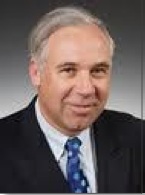 Following the healthcare legislation and in a move toward diversification, last November health plan Humana acquired health care provider Concentra for about $790 million. This week the health plan built on that acquisition with a much smaller deal with South Africa-based Discovery Holdings: Humana is launching a joint venture with Discovery called HumanaVitality that will provide Humana members with wellness tools and rewards. Humana also will own 25 percent of The Vitality Group, Discovery's US subsidiary, which will still offer its wellness solution to US employers that are not necessarily Humana customers.
Following the healthcare legislation and in a move toward diversification, last November health plan Humana acquired health care provider Concentra for about $790 million. This week the health plan built on that acquisition with a much smaller deal with South Africa-based Discovery Holdings: Humana is launching a joint venture with Discovery called HumanaVitality that will provide Humana members with wellness tools and rewards. Humana also will own 25 percent of The Vitality Group, Discovery's US subsidiary, which will still offer its wellness solution to US employers that are not necessarily Humana customers.
"We have this integrated wellness program now but we know we need to figure out how to put it through mobile apps to drive engagement," Paul Kusserow, Chief Strategy Officer, Humana Venture Capital told MobiHealthNews in an interview at the HIMSS event in Orlando, Fla. this week. "We are talking to a lot of people to get ideas there."
Kusserow said that he is most interested in data standardization and analytics currently: "If mobile is the last mile and that's the face of the consumer, then you better make sure the data is out of the silos and personalized. Otherwise people aren't going to use it."
Diabetes management, aging in place and social networking and media trends have been top of mind for Kusserow recently.
"Health IT valuations are stratospheric," Kusserow said. "It will be interesting to see what happens there... On the apps side I haven’t seen such high valuation, though. In the post reform market, the individual market tends to be young and independent. We want to make sure they get their information and staying engaged. We want to make sure we are getting information to these folks."
Kusserow also sees opportunities on the other end of the age spectrum.
"I’ve looking into a lot of aging in place technologies recently." Kusserow said. "A friend of mine told me at breakfast [here at HIMSS] that [aging in place] technologies won't find adoption because they change the whole business model for home care. My response was: The business model needs to change."
Kusserow said it is still unclear to him how these technologies should be implemented and who should implement them.
"Sensor technology is getting cheaper, commoditized, and standardized, but there are still lots of questions around putting in protocols. What does it all mean? When you open the fridge less, sit on the sofa more, etc," Kusserow said. "Those kinds of protocols can quickly begin to predict behavior. When someone breaks from their norms, what sort of protocols kick in? We serve a lot of older people since we are a Medicare shop so home care and aging in place tech is key for us. There is interesting work being done in these retirement communities -- the pre-nursing home environments -- so it's going to be interesting to see where that goes."
Whether it's aging in place or wellness programs for the employed and younger individual markets, Kusserow sees the opportunity for data analytics across all of our health choices.
"The goal is to build a full view," he said. "It's like all the great marketing shops out there -- they have a full view of you in a centralized data warehouse. Once we achieve that, we need to figure out how do use that information to optimize behavioral change. The health crisis is really occurring because of people's choices: A lack of exercise, obesity, smoking. That's driving this fight."
While the HIMSS event is beginning to discuss more mobile health, the focus is still largely on electronic health and medical records, which is why I thought this aside from Kusserow was funny and true, really:
"I think EMRs are still a big question -- and -- I think it's a boring one."
Kusserow was one of many people who told me HIMSS had a renewed energy this year: "HIMSS is back! In the last two years it had been dead as a doornail," he said. "In the past few years there were not a lot of investors, for example. They are here now though."















